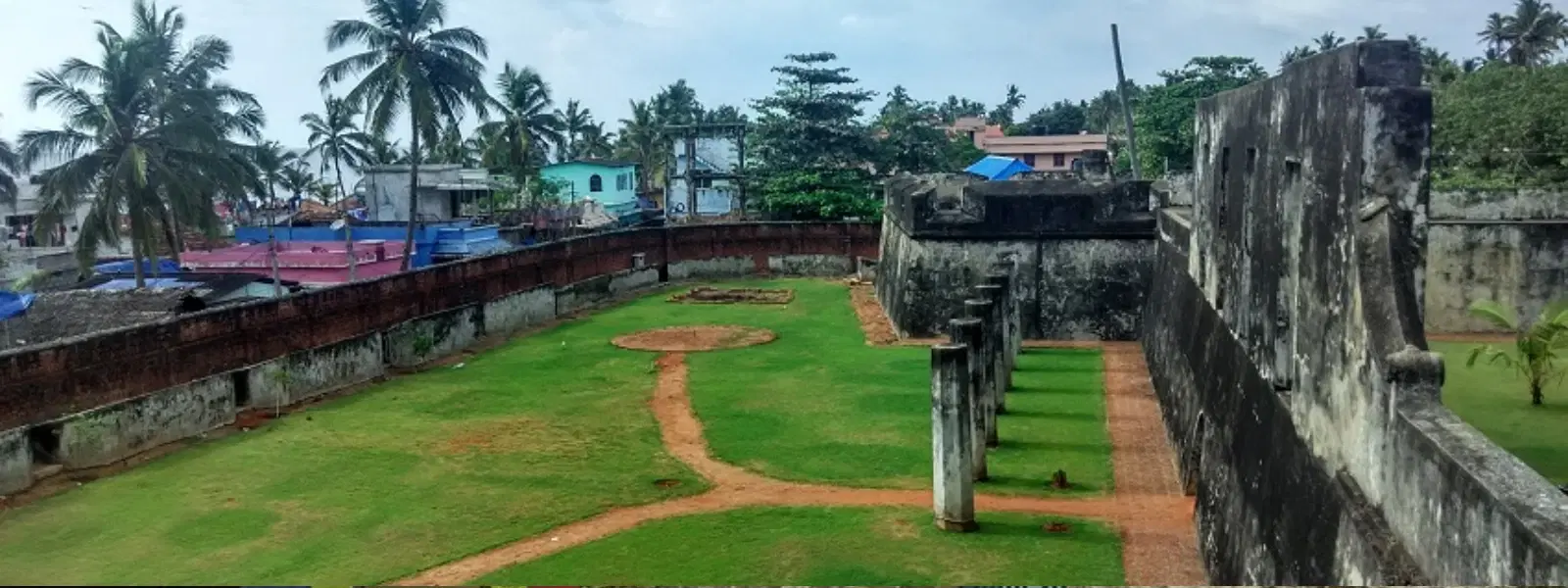
Hotels
•03 min read

Imagine wandering through a labyrinth of ancient stone structures, enveloped by vibrant greenery and echoes of a bygone dynasty. The Rabdentse Ruins, nestled in the heart of Sikkim, offer a rare glimpse into the region's cultural tapestry. As the second historical capital of Sikkim, this archaeological treasure not only captivates history enthusiasts but also beckons trekkers and curious travelers alike. In this blog, we uncover Rabdentse's fascinating past, explore its unique architecture, and dive into its significance as a major Sikkim tourist attraction.
Rabdentse holds the distinguished title of being Sikkim's second capital, established under the dynamic Namgyal dynasty. Once a bustling center of power, the shift from Yuksom to Rabdentse was driven by a need for a more strategically located and administratively effective seat of governance. This historic move was pivotal in shaping the cultural and political landscape of Sikkim, as the royal court turned into a center for sophisticated trade, art, and diplomacy.
The contributions of the Namgyal dynasty to Rabdentse are deeply etched in the ruins that remain today. During its prime, Rabdentse was not only a political hub but also a flourishing center for cultural exchange. The dynasty's influence extended beyond the kingdom's borders, fostering trade and weaving a rich tapestry of arts and traditions. Their legacy, evident in the ruins, continues to fascinate those who visit, offering a direct link to a storied past that shaped modern Sikkim.
A visit to the Rabdentse palace ruins is like stepping into an open-air museum where each stone tells a tale. The remnants of the royal residence, once home to the ruling elite, and the grand assembly hall provide a sense of the architectural sophistication of the era. Adding to this impressive sight are the chortens, or Buddhist stupas, peaceful structures that punctuate the complex with spiritual significance. Crafted from locally sourced stones, these ruins display an artful blend of functionality and aesthetic beauty.
Every element within the Rabdentse ruins carries symbolic significance intrinsic to Sikkim’s Buddhist heritage. The chortens, in particular, resonate with the spiritual commitment of the Namgyal dynasty. They are emblematic of Tibet's influence intertwined with local traditions, creating a unique blend that defined Sikkim’s architectural and cultural identity.

Insight Corner: The chortens at Rabdentse symbolize the spiritual connection of the Namgyal dynasty with Buddhism, serving as a reminder of Sikkim's deep-rooted cultural heritage.
Today, preserved diligently by the Archaeological Survey of India, the Rabdentse archaeological site stands as a marked testament to a glorious past. Recognized as a heritage landmark, the site receives ongoing conservation efforts that ensure its stories continue to inspire and educate visitors. Each arch and stone encourages reflection on the region's historical narrative, making it a must-explore destination for anyone fascinated by India's rich cultural history.
The journey to Rabdentse is as enchanting as the destination itself. Starting from the revered Pemayangtse Monastery, the trekking trail meanders through lush forests and offers breathtaking views of the majestic Kanchenjunga range. With ample opportunities to pause and absorb nature's beauty, this trail is perfect for the wanderer in the heart of every traveler, promising not only history but also a rejuvenating escape into nature.
For history buffs and casual tourists alike, Rabdentse remains a beacon of culture and legacy among the abundant historical sites in Sikkim. Its unique charm is often compared with other revered sites like Tashi View Point and Sangachoeling Monastery, each sharing a piece of the region's past. However, it is Rabdentse's blend of historical grandeur and serene natural beauty that makes it stand apart as one of the premier Sikkim tourist attractions.
Visiting Rabdentse does more than satisfy a desire for old-world charm; it offers a profound connection to the cultural evolution of Sikkim. The site acts as a gateway to understanding the intricate relationship between local traditions and Buddhist influences. This immersive experience helps visitors appreciate the depth of Sikkim’s cultural history and reinforces the significance of preserving our shared heritage.

Rabdentse was the second capital of Sikkim under the Namgyal dynasty but is no longer the capital today.
The second Chogyal of Sikkim, Tensung Namgyal, shifted the capital from Yuksom to Rabdentse in the 17th century.
The first capital of Sikkim was Yuksom, established in 1642.
Rabdentse features remnants of royal residences, assembly halls, and chortens, showcasing a blend of Tibetan and local architectural styles.
The Rabdentse Ruins stand as a living museum of Sikkim's rich cultural history. From its days as the thriving second capital under the Namgyal dynasty to its current status as a beloved heritage site, Rabdentse continues to offer invaluable insights into a dynamic past. Its architectural elegance and serene trekking trails combine to create a unique journey that is both inspiring and educational. This historical and cultural landmark remains an essential destination for anyone looking to experience the soul of Sikkim.